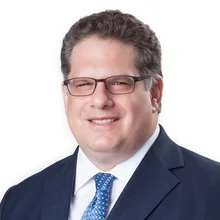Buy-side Firms Reject EMS Brokerage Charges
Some users favor a licence fee over per-trade charging—and have forced vendors to make the switch.

Leading buy-side firms are calling time on the brokerage charging models used by some liquidity aggregators, joining dealers in a growing protest.
In at least two cases, buy-side users of an aggregator have been able to push the vendor into applying an annual license fee instead of per-trade charges.
“There has always been a lot of contention around the way in which EMS and platform fees are charged,” says Ken Monahan, senior analyst on the market structure and technology team at Greenwich Associates. “What’s new is the level of pressure being brought to bear on the platforms.”
For buy-side opponents, the objections are two-fold – some argue the per-trade fees make it harder for them to work out which liquidity providers to use, while others believe the approach could fall foul of European regulation. The latter was the motive for one large European asset manager, which pushed back on brokerage charges and now pays an annual license fee.
“[The vendor] does charge brokerage, but not to us. As well as a license fee from us, they collect what they call a connection fee from the brokers – but it’s fixed now and not volume-based. We insisted on a change in the structure. As long as they keep the revenues, they’re happy to keep the business,” says the manager’s head of trading.
That asset manager was seeking a new charging model for its equities trading, but a second is known to have achieved the same in foreign exchange. In all, five buy-side trading heads at large asset managers tell WatersTechnology’s sibling publication FX Markets they are at various stages of challenging the brokerage charging model at aggregators of equity and FX liquidity.
The aggregators—also known as execution management systems (EMSs)—intermediate between dealers and their clients, allowing consumers of liquidity to reach an array of providers via a single service. All of these services describe themselves as software and argue they should not be regulated as trading platforms. Some earn their money via a software licensing model, while others collect a per-trade brokerage fee, typically paid by the dealer and then bundled into the prices the dealer quotes to users of the service.
EMS vendors Adroit Trading Technologies, Axe Trading, smartTrade Technologies, and TradingScreen already apply an annual license fee, rather than per-trade commissions.
Flextrade, Portware and BidFX—the latter acquired last week by Singapore’s SGX—declined to discuss their approach to pricing.
Clarity and compliance
Transparency arises as an issue because the charges paid by the dealers are not fixed—they vary in line with the amount of business a liquidity provider transacts over the service—meaning a consumer of liquidity cannot know what proportion of each price is the EMS fee.
This muddies the water for firms that want to work out which dealer is offering the tightest prices for a given type of trade.
Phil Weisberg, executive vice-president of strategic planning and partnerships at oneZero Financial Systems, says larger firms in particular are instead choosing to pay the EMS in return for a ‘cleaner’ price.
“They’ve realized they could pay for execution through the spread, but are instead willing to write a cheque to manage that process better. In some cases, they’re willing to absorb the full cost of the supply chain to create zero friction in getting liquidity to them, because they feel ultimately that’s in the best interest of their asset owners and that allows them to grow their AUM more consistently,” he says.

For the large European asset manager that managed to strong-arm one EMS into agreeing an annual license fee, compliance was the primary motive.
After the rollout of Mifid II in January 2018, the trading head says the asset manager came to the conclusion that “the pricing structure had to change. Anything that involves a commission where the dealer may have historically been paying the lion’s share of the cost of the EMS seems like an inducement.”
Mifid II contains a number of rules designed to avoid hidden conflicts of interest, including a general rule that prohibits firms from receiving benefits from third parties unless a number of conditions are met.
While equities fall firmly within the scope of Mifid II, spot FX trades and some forwards are not defined as a financial instrument. In collecting commission from dealers, however, comparisons have also been drawn to the broader, discouraged practice of payment for order flow—in which an intermediary might favor more lucrative relationships over others.
The head of trading at a second asset manager suggests these kinds of questions will ultimately bring about the demise of brokerage charging: “I would be surprised if these pricing models could last forever,” he says.
Turkeys and Christmas
That could be premature. Buy-side firms often benefit from the brokerage model—in essence, the per-trade fees paid by dealers help to cover the cost of the technology for asset managers and other liquidity consumers.
“It’s really difficult for the buy side to put their hand up and say ‘I would like us to pay more money’, that’s hard to do,” says one bank’s head of e-FX sales.
The head of trading at a third asset manager, running more than $20 billion, is considering employing a third-party vendor for execution. He says that while platforms are usually free of charge for buy-side participants, there is still a cost involved in developing and maintaining them. “Who’s going to pick up the bill for that?” he asks.
Some big dealers have publicly criticized the use of brokerage models by trading venues and EMSs.
Within FX, Europe’s markets regulator is also investigating claims that aggregators are de facto trading platforms. Regulated venues have argued that in bringing together buyers and sellers, EMSs should register in Europe as multilateral trading facilities.
In fixed income, which falls squarely under Mifid II, trading systems of the type used in equities and FX are increasingly being adopted—and their charging models are facing scrutiny.
The head of trading at a large hedge fund says he chose an EMS as a way to access trading venues such as Tradeweb partly because it applied a flat software fee: “The fact that their model is clean is the cherry on top of the sundae, so to speak.”
Additional reporting: Alessandro Aimone
Further reading
Only users who have a paid subscription or are part of a corporate subscription are able to print or copy content.
To access these options, along with all other subscription benefits, please contact info@waterstechnology.com or view our subscription options here: http://subscriptions.waterstechnology.com/subscribe
You are currently unable to print this content. Please contact info@waterstechnology.com to find out more.
You are currently unable to copy this content. Please contact info@waterstechnology.com to find out more.
Copyright Infopro Digital Limited. All rights reserved.
As outlined in our terms and conditions, https://www.infopro-digital.com/terms-and-conditions/subscriptions/ (point 2.4), printing is limited to a single copy.
If you would like to purchase additional rights please email info@waterstechnology.com
Copyright Infopro Digital Limited. All rights reserved.
You may share this content using our article tools. As outlined in our terms and conditions, https://www.infopro-digital.com/terms-and-conditions/subscriptions/ (clause 2.4), an Authorised User may only make one copy of the materials for their own personal use. You must also comply with the restrictions in clause 2.5.
If you would like to purchase additional rights please email info@waterstechnology.com
More on Trading Tech
Recent volatility highlights tech’s vital role in fixed income pricing
MarketAxess’ Julien Alexandre discusses how cutting-edge technology is transforming pricing and execution in the fixed income market amid periodic bouts of volatility
Banks fret over vendor contracts as Dora deadline looms
Thousands of vendor contracts will need repapering to comply with EU’s new digital resilience rules
Where have all the exchange platform providers gone?
The IMD Wrap: Running an exchange is a profitable business. The margins on market data sales alone can be staggering. And since every exchange needs a reliable and efficient exchange technology stack, Max asks why more vendors aren’t diving into this space.
This Week: Trading Technologies completes ANS deal; State Street; Equinix; and more
A summary of the latest financial technology news.
Interactive Brokers looks beyond US borders for growth opportunities
As retail trading has grown in volume and importance, Interactive Brokers and others are expanding international offerings and marketing abroad.
JP Morgan’s goal of STP in loans materializes on Versana’s platform
The accomplishment highlights the budding digitization of private credit, though it’s still a long road ahead.
As data volumes explode, expect more outages
Waters Wrap: At least for those unprepared—though preparation is no easy task—says Anthony.
This Week: ICE Bonds and MarketAxess plan to connect liquidity networks, TS Imagine, Bloomberg, and more
A summary of the latest financial technology news.







